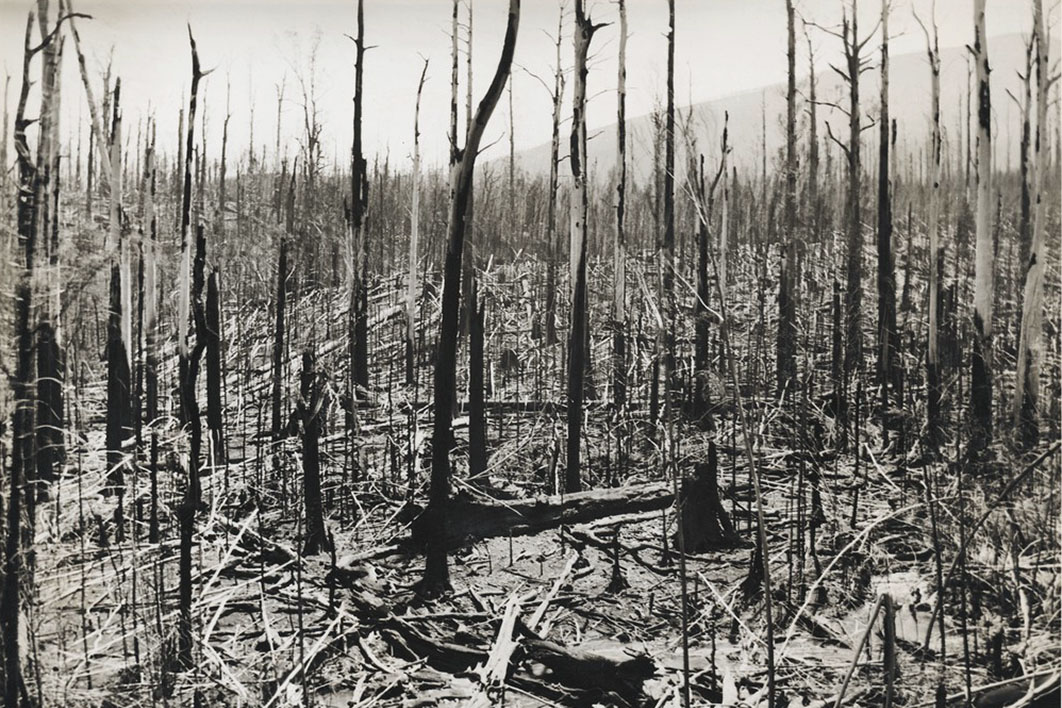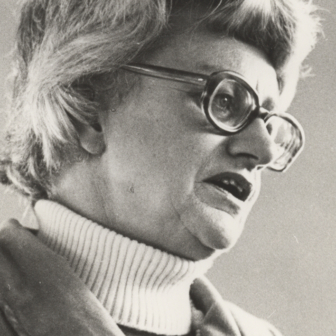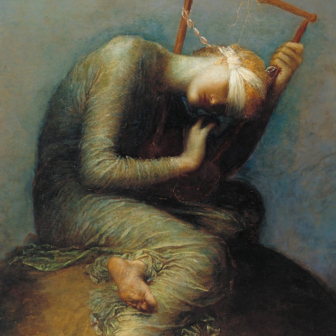During five years of researching the history and politics of Indigenous burning, I have often found myself being pulled back towards debates about prescribed burning. This practice — also known as hazard reduction burning, control burning or planned burning — uses deliberately lit fire, under favourable conditions, most commonly to reduce the fuel available for future bushfires. Because Indigenous burning is often conflated with prescribed burning, I’m frequently asked an ostensibly simple question: does it work?
To say that experts, researchers and practitioners disagree about the answer is to put it mildly. Academic mentors have warned me to stay away, lest I be caught up in interminable debates and distracted from my main research. Among experts, suspicions about motives and trench mentalities abound, tied up with cross-disciplinary rivalries, political ideologies and implicit knowledge hierarchies. Your model versus my anecdote; your beliefs versus my facts. The debate can seem a like a black hole, sucking in and grinding up.
Fire management, and especially prescribed burning, has dominated public discussion in recent weeks. In this highly charged political context, I must admit to some scepticism about the calls for a royal commission or other inquiries. As the American fire historian Stephen Pyne has observed, fire is almost never considered on its own terms. Three bushfire royal commissions over the past century demonstrate how prescribed burning can become a proxy for other political issues.
1939
One of Australia’s most iconic disasters was Black Friday, which took the lives of seventy-one Victorians in 1939. The subsequent royal commission is well-known for the eloquence of commissioner Leonard Stretton’s lamenting of the environmental ignorance of settlers: “They had not lived long enough. The experience of the past could not guide them to an understanding of what might, and did, happen.”
The Stretton commission attracted a great deal of public interest and deeply influenced land management policy across Victoria. It also served as a public stage for bureaucratic infighting and blame-shifting, especially over the role, if any, that prescribed burning should play in managing the state’s forests.
A.E. Kelso, an engineer with the Melbourne Metropolitan Board of Works, sought forests with closed canopies and “clean” floors in order to safeguard Melbourne’s water supply from erosion. Drawing on American ideas of forestry, he argued for the complete exclusion and suppression of any fire within the forest. By contrast, rural Victorians generally called for much greater “broadcast” burning, sometimes every three to four years, in order to keep the forest safe. But forester C.E. Lane-Poole derided such proposals as a self-interested desire for the fresh stock feed that grew in the fires’ wake, claiming that graziers saw “a box of matches as the best grass seed.”
The state’s Forests Commission tried to exclude fire — controlled or otherwise — wherever possible, believing it damaged the mountain ash (Eucalyptus regnans) forests. But it reluctantly accepted the need for strategically important areas such as ridge lines to undergo some prescribed burning.
Stretton ultimately found that excluding fire altogether was impractical in Australia, and that the amount of prescribed burning performed before 1939 had been “ridiculously inadequate.” Stretton’s phrase has been quoted ever since as a foundational legitimation of prescribed burning. Less well-known is his later qualification: “it is not suggested that the practice be followed in mountain ash country… [except] where necessity demands that it should be done.” In 1939, Stretton recognised that prescribed burning could not be thought of as a blanket solution.
1961
Stretton’s recommendations for fire management were extended by the royal commission following the 1961 Dwellingup fires in Western Australia. Organised forestry in that state had followed a fire suppression paradigm since it had been established in the early twentieth century. Also inspired by American ideas about fire, early WA foresters believed that bushfire was harmful to timber and that it was possible to banish it entirely from the forests of jarrah (Eucalyptus marginata) in the state’s southwest. In recognition of the increasing failures of this policy, and after discovering that jarrah forests were less sensitive to fire than mountain ash, conservator Allan Harris overturned the policy in 1954. Broad-based, rotational prescribed burning became the norm in jarrah forests, burning 10 per cent or more of the forest annually.
This policy came under close scrutiny following the 1961 fires, which caused significant forest damage but no loss of life. Royal commissioner Geoffrey Rodger found that prescribed burning had worked reasonably well in Dwellingup and the WA Forests Department should “make every endeavour to improve and extend” the practice in jarrah. But he also noted that it would not stop a fire under extreme conditions; instead, the aim was to “reduce the fire intensity and rate of spread and so allow fire suppression forces to attack the fire more easily and with greater safety.” This formed the philosophical basis of the “Australian Strategy” of prescribed burning that was exported across the continent and even overseas.
At the commission, many farmers argued for extended prescribed burning, some calling for the state’s southwest to be burned “whenever possible” or “as often as it will burn.” Much of their testimony was coloured by resentment at the department’s existing policies, “high-handed” official attitudes or even individual prosecutions for illegal ignition — a “natural antipathy to government departments and civil servants,” in the words of forester Angelo Milesi. As the commission progressed, Rodger increasingly suggested to witnesses that perhaps they were not up to date with department practice, and he ultimately found that many critics had “little real knowledge” of either the forests or department policy. Prescribed burning levels functioned, he believed, as a proxy for other complaints and long-held grudges.
2009
The royal commission set up following Victoria’s devastating Black Saturday fires in 2009, which killed 173 people, chose to be guided in its assessment of prescribed burning by a panel of experts. The panel emphasised that the practice was the “most effective mechanism” to reduce fuel; but it also found that under the catastrophic conditions on that day “the probability of effective suppression was negligible,” regardless of just how much fuel reduction burning was conducted, and that the level of burning “did not mitigate the immediate impacts of fire.” Yet reduced fuel levels from prior burns did help contain and suppress the fires, according to the panel, once conditions moderated following the wrenching wind change on the evening of the conflagration.
The panel agreed that a hectare-based target for prescribed burning should be a guide rather than the sole policy aim, because not all hectares are of equal value. But the commission chose to recommend that 5 per cent of all public lands be burned on an annual basis. After heavy criticism that this burning was being disproportionately conducted in remote areas where escaped burns were less liable to damage property, and after a review found the target not to be “achievable, affordable or sustainable,” the policy was replaced in 2016. Prescribed burning in Victorian is now guided by the evidence of where it will best reduce bushfire risk.
As in 1939 and 1961, the submissions and media response to the Black Saturday commission reveal that prescribed burning functioned as a proxy for other issues. Climate change, a defence of public lands, cattle grazing on the Victorian High Country, the decline of the native timber industry — factors like these were hopelessly entangled with discussions ostensibly about fuel levels. Very few participants considered the complexities of catastrophic conditions, or whether a strategy developed in jarrah was applicable to mountain ash. Aside from the familiar confusion between prescribed burning and “back burning,” there was no real consensus on how to refer to different types of burning, from strips around settlements or on the edge of wet forests to the broad-area burns developed in Western Australia.
As those three commissions demonstrate, Australia has always had a ready supply of armchair fire generals. But the reaction to the current southern fires seems, like the fires themselves, to be more extensive. The opinion industry has been churning out hot takes, rural and interface communities are genuinely outraged, and we are even confronted by the horrifying prospect of a coordinated online campaign of bots and sock puppets encouraging quick fixes and undermining nuanced discussion.
The recent fires have also boosted interest in Indigenous cultural burning. Movements like the Firesticks Alliance, which seeks to reignite cultural burning in the southern states, hold great promise both for hazard reduction and especially as way for Indigenous Australians to assert and fulfil their responsibilities to country. But while cultural burning and prescribed burning might seem like the same thing, they are not identical, and they often differ in method, effect and especially intent. Appropriation is a danger, as is exploitation or rushed failures. Cultural burning isn’t the answer; it is part of a multitude of answers, and needs to be considered patiently, respectfully and locally.
Prescribed burning resists easy, grand, continent-wide narratives. It’s a tool, not a panacea, and one that must be thought of and used subtly on a local basis. We also need broader recognition that it is hazard reduction and not hazard removal. A vigorous contest of ideas, policies, and practice is obviously desirable, but it will be challenging to create a space where this can happen without being overshadowed by the broader politics of fire and land management. We have too many armchair fire generals and not enough fire stewards.
How we manage this discussion may well have significance beyond our shores. The response to the 1910 “Big Burn” in the United States locked the US Forest Service into a fire-suppression paradigm, culminating in the unsustainable maxim that all wildfires must be extinguished by 10 am the following day. Fires were suppressed on the ground and fires were suppressed in the mind; research showing their vital ecological role was shamefully buried or ridiculed.
This fire suppression paradigm was exported around the globe, including, as we have seen, to Australia. It took decades for Australians to abandon it, and we played a small but significant part in convincing Americans to do the same. In recent years disastrous wildfires have struck (among other places) California, Greece and Portugal. Climate change is challenging established fire management policies and strategies. It is also challenging established fire politics. With these fires, we have an opportunity to lead the world again. •




